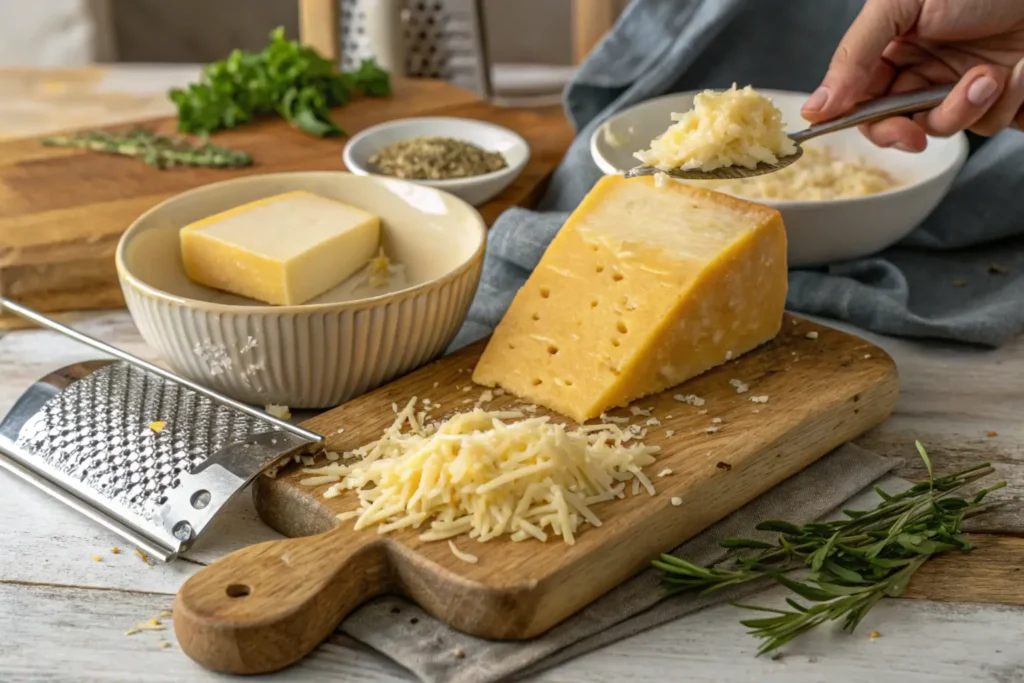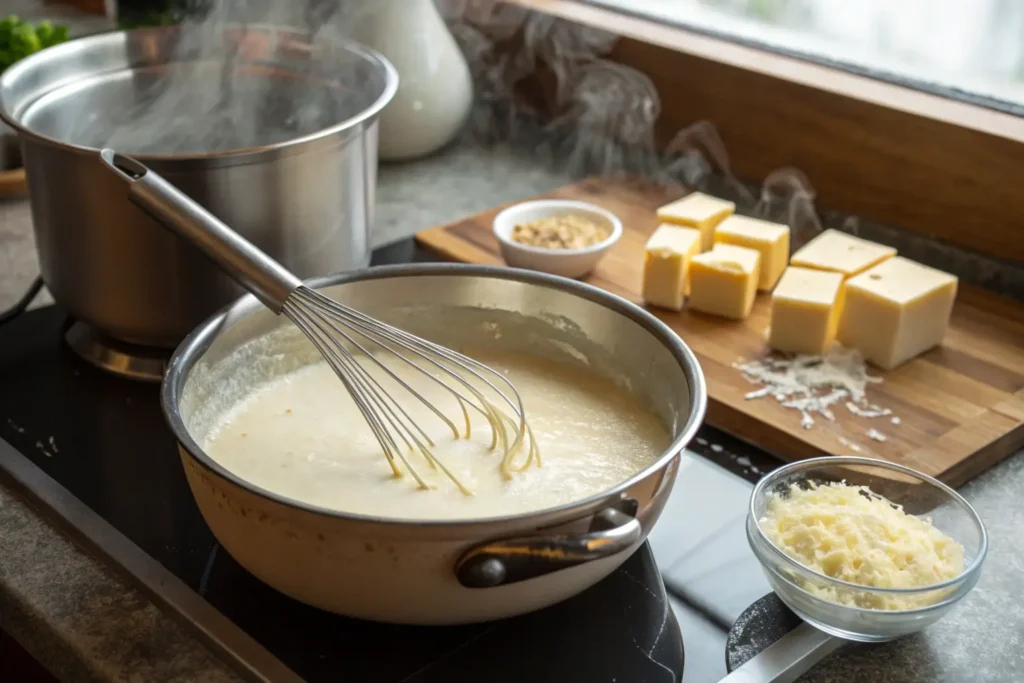Introduction
Mac and cheese is one of those dishes that feels like a warm hug in a bowl. Whether it’s a weeknight pick-me-up or a family favorite at the dinner table, it’s got a way of bringing people together. But for something so beloved, it’s surprisingly easy to mess up. One wrong move, and you’re left with bland, clumpy disappointment instead of that creamy, cheesy goodness we all crave. That’s why I’m here to help you avoid the most common pitfalls. From choosing the right cheese to perfecting the pasta, this guide will make sure your mac and cheese is the stuff dreams are made of. So grab a whisk and let’s get to it—it’s time to take your mac and cheese game to the next level.
The Importance of Picking the Best Cheese for Mac and Cheese

Cheese is the heart and soul of mac and cheese, but not all cheeses are created equal. Picking the wrong one can turn a rich, creamy sauce into a gooey, oily mess. Don’t worry, though—we’re about to fix that.
Why Using Only One Cheese Can Ruin Mac and Cheese
Ever tried making mac and cheese with just cheddar? It sounds great in theory, but it often ends up grainy or greasy. Cheddar alone lacks the melting quality you need for that silky sauce. The key is blending cheeses. A mix of sharp cheddar for flavor and a melting-friendly cheese like Gruyère or Monterey Jack works wonders. Think of it as a team effort—no one cheese can do it all!
How Pre-Shredded Cheese Ruins Creamy Mac and Cheese
Let me guess—you grabbed a bag of pre-shredded cheese to save time, right? Here’s the problem: those shreds are coated with anti-caking agents like cellulose, which keep them from melting smoothly. This is a one-way ticket to a lumpy sauce. Instead, grab a block of cheese and a grater. It takes a little extra effort, but trust me, your taste buds will thank you.
Pro Tip: Exploring Alternative Ingredients
If you’re looking to elevate your mac and cheese with a creamy twist, consider experimenting with evaporated milk. Its unique texture and concentrated flavor can add a velvety richness to your sauce. Learn more about why evaporated milk works wonders in mac and cheese in this guide.
Pasta Perfection for the Ultimate Mac and Cheese
Pasta might seem like the easy part of mac and cheese, but it’s another area where mistakes can sneak in. From choosing the right shape to cooking it just right, every step matters.
Best Pasta Shapes for Mac and Cheese
Not all pasta shapes are made for mac and cheese. Thin noodles like spaghetti or fettuccine don’t hold the sauce well, leaving your dish feeling flat. Stick with shapes like elbows, shells, or cavatappi. These have little nooks and crannies that trap all that cheesy goodness, ensuring every bite is as flavorful as the last.
Avoid Overcooked Pasta in Your Mac and Cheese
Overcooked pasta turns into mush when baked, while undercooked pasta stays chewy. Here’s the trick: cook your pasta just shy of al dente. It should still have a slight bite, since it’ll continue to cook when you mix it with the sauce and pop it in the oven. Think of it as giving your pasta room to grow!
Salt Your Pasta Water for Perfect Mac and Cheese
Skipping salt in your pasta water? Big mistake. Pasta water should taste like the ocean—seriously, don’t skimp. This step seasons the pasta from the inside out, making the final dish taste more balanced. It’s one of those small details that makes a huge difference.
The Art of Making the Sauce

Alright, so you’ve got the cheese and the pasta under control. Now it’s time to talk about the sauce. This is where the magic happens, but it’s also where things can go off the rails. A smooth, creamy sauce is non-negotiable for top-tier mac and cheese, so let’s get it right.
Mistakes with Béchamel Sauce
Béchamel is the classic base for mac and cheese sauce, but if you rush it, disaster strikes. The key is patience. Start by melting butter, then whisk in flour to form a roux. Cook this mixture for a couple of minutes to get rid of that raw flour taste. Slowly—yes, slowly—add warm milk while whisking constantly. Go too fast, and you’ll end up with lumps. Take it slow, and you’ll have a smooth, creamy base ready to shine.
Understanding the Right Milk for the Recipe
Not all milk is equal when it comes to mac and cheese. Whole milk is your best bet for a rich, creamy texture. Skim milk might seem like a healthy swap, but it lacks the fat needed for a satisfying sauce. And if you’re feeling fancy, adding a splash of heavy cream can take your sauce to the next level. Just don’t overdo it, or the sauce might turn too thick and heavy.
How Not to Overheat Your Cheese Sauce
This might be the number one rookie mistake. Overheating your cheese sauce can make the cheese separate, leaving you with an oily, curdled mess. To avoid this, remove your béchamel from heat before adding the cheese. Stir it in gradually, letting the residual heat melt the cheese gently. Trust me, this step alone will save your sauce.
Flavor and Seasoning
Let’s face it—bland mac and cheese is a crime against food. Adding the right flavors and seasonings can turn a good dish into a great one. But there’s a fine line between flavorful and overwhelming, so let’s find the sweet spot.
The Danger of Bland Mac and Cheese
Have you ever tasted mac and cheese that just…exists? No flavor, no excitement, just cheese and noodles. The problem is usually a lack of seasoning. A pinch of salt and pepper goes a long way, but don’t stop there. Garlic powder, onion powder, and even a hint of paprika can add depth without overpowering the dish. Don’t forget a little Dijon mustard—it’s the secret ingredient that makes the cheese flavor pop.
Adding the Right Amount of Spice and Salt
Seasoning is all about balance. Add too little, and your mac and cheese will fall flat. Add too much, and you risk masking the cheesy goodness. Start small and taste as you go. If you’re feeling adventurous, a dash of cayenne or chili powder can bring a subtle heat that pairs perfectly with rich, creamy cheese. But remember, it’s easier to add more seasoning than to take it out, so go slow.
Combining Ingredients
Once you’ve nailed the sauce and pasta, it’s time to bring it all together. But even here, there are pitfalls that can throw off the whole dish. Mixing everything properly is key to achieving that perfect bite.
Avoiding Grainy Textures
Grainy mac and cheese is the worst. It usually happens when cheese doesn’t melt smoothly into the sauce. The solution? Shred your cheese finely and let it come to room temperature before adding it to the béchamel. This ensures it melts evenly, giving you that luscious, velvety texture you’re aiming for.
Not Saving Pasta Water: A Missed Opportunity
Here’s a pro tip most people miss: save a cup of your pasta water before draining the noodles. This starchy, salty water can work wonders for your sauce, helping it stick to the pasta and loosening it if it gets too thick. It’s like a little insurance policy for perfect mac and cheese.
Cooking and Baking Tips
We’re in the home stretch now, but this is where a lot of people slip up. Cooking and baking might seem straightforward, but it’s easy to overdo—or underdo—it. A little extra attention here will make sure your mac and cheese is just right.
Mistakes with Stirring During Cooking
Once you’ve combined your pasta and sauce, it can be tempting to stir it endlessly to make sure everything’s evenly coated. But over-stirring can break down the pasta, leaving you with a mushy mess. Mix just enough to combine everything, then let it be. This keeps the pasta intact and ensures your dish has a satisfying texture.
Overbaking Mac and Cheese
Baking your mac and cheese gives it that golden, crispy top that’s hard to resist, but overbaking can dry it out. The trick is to bake just until the top is bubbling and lightly browned. Depending on your oven, this usually takes 20 to 30 minutes at 350°F. If you’re worried about it drying out, cover it with foil for the first half of the baking time, then remove the foil to let the top crisp up.
For Classic Inspiration
If you’re craving a timeless recipe, look no further than the classic baked mac and cheese. With its golden, crispy top and creamy interior, it’s a dish that never goes out of style. Check out this old-fashioned baked macaroni and cheese recipe for a nostalgic spin on this comfort food favorite.
FAQs
What can go wrong with mac and cheese?
Oh, so many things! From grainy sauces to mushy pasta, there are plenty of pitfalls. The most common issues include using the wrong cheese, overcooking the pasta, and overheating the sauce. But don’t worry—if you follow the tips in this guide, you’ll be dodging these mistakes like a pro.
Why should you never boil pasta in water for mac and cheese?
It’s not that you should never boil pasta, but you should be mindful of how you do it. Overcooking pasta in unsalted water is a recipe for disaster. The pasta absorbs water as it cooks, and without salt, it’ll taste bland no matter how good your sauce is. Always salt your water generously and cook the pasta just shy of al dente to give it the perfect texture.
How do you keep mac and cheese from drying out after cooking?
The key is in the sauce-to-pasta ratio. Make sure your sauce is a bit looser than you think it needs to be before baking, as it’ll thicken in the oven. Covering the dish with foil for part of the baking process can also help trap moisture. And if you’re reheating leftovers, a splash of milk stirred in before warming can bring it back to life.
Why does my mac and cheese get mushy?
Mushy mac and cheese is usually a result of overcooking the pasta or stirring it too much after combining it with the sauce. Remember to cook your pasta to just shy of al dente, and handle it gently when mixing. If you’re baking, don’t leave it in the oven too long, as the extra cooking time can soften the pasta further.
Conclusion
Making perfect mac and cheese doesn’t have to be tricky. With a few simple tips and attention to detail, you’ll transform this comfort classic into a crowd-pleaser every time. By choosing the right cheese, cooking your pasta just right, and mastering the sauce, you’re setting yourself up for success. Remember, it’s all about balance—flavorful, creamy, and just the right amount of cheesy. Whether it’s for a holiday feast or a cozy dinner, these tips will make your mac and cheese the dish everyone asks for seconds of. So go ahead and give it a try. Your taste buds—and everyone at the table—will thank you.


3 thoughts on “What Not to Do When Making Mac and Cheese? The Secrets You Need”